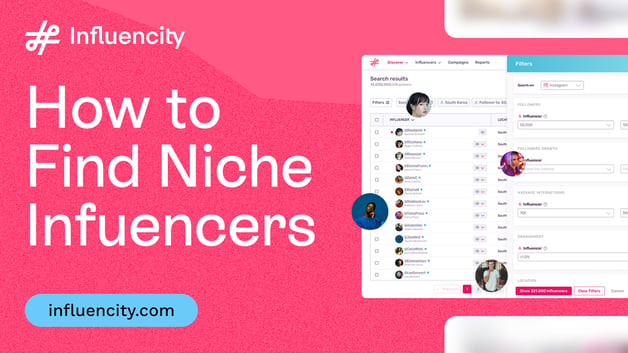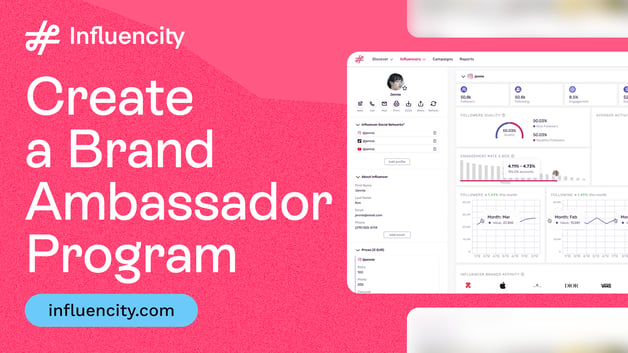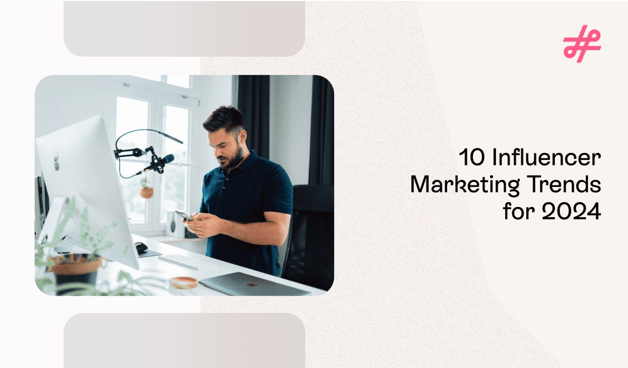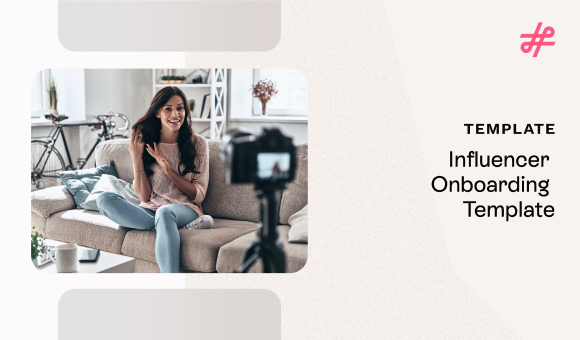When Does Social Media Reach Matter More?
As important as engagement may be, there are some instances where it makes sense to focus on social media reach. Think of campaigns where you want to get your brand in front of as many people as possible. Here are a few examples of instances where you’d want to measure performance based on reach:

Brand Awareness Campaign
With campaigns where you want to build brand awareness, visibility is the biggest goal. You want to get your brand or product in front of as many people as possible so that they know about it. Even if they don’t immediately engage with the content or buy from you, you still want them to see and hear about your brand.
It’s about getting them familiar with your brand, so even if they’re not in a buying mindset right now, they’ll think of your brand when they’re ready to buy.
So reach is key for these types of campaigns, because the more people you reach, the better your visibility.
Here’s one of my favorite style influencers sporting some sneakers Gola Classics. You can see that she’s not telling anyone to buy the product. She’s just showing how she’s styled the shoes in her own unique way, providing styling inspiration and creating awareness about the brand among fashion enthusiasts.
New Product Launches
When you’re launching a new product, you want to expose as many people as possible to a new offer. You don’t just want your loyal customers to buy the new product. Instead, you also want to reach folks who may be interested in the product even if they’ve never bought from you before.
This is why reach is a key metric in measuring product launch campaigns. It indicates that you’re generating awareness about the new offering even if it doesn’t directly lead to immediate sales.
I’ve been a fan of Huda Beauty for a long time, which is why I absolutely love their new product launches. The brand often involves makeup influencers with massive reach in their product launch campaigns to garner reach. For instance, Samantha Harvey (317k followers) was a part of the promo campaign for the brand’s UBE Collection.
She shared videos of the promo campaign to her feed along with snapshots of the event to maximize exposure. She also shared a Reel demonstrating the collection to her fans, further boosting reach and awareness.
Mass Market Targeting
Some brands may run marketing campaigns involving celebrity influencers or macro-influencers to reach a mass market. Nike’s partnership with Serena Williams is an excellent example, with the athlete having over 18 million followers. These campaigns focus on driving exposure and reaching a general audience. So reach is an important factor for measuring campaign performance.
Pro Tip: For any type of campaign where you’re looking to maximize exposure, choose influencers with high reach. Alternatively, some brands may opt to activate multiple smaller influencers to expand reach within a more specific niche.
Engagement Rate vs. Reach: Which Metric to Prioritize by Campaign Type?
Based on the scenarios I’ve shared above, you can get some idea of when it makes more sense to prioritize social media reach vs. engagement rate. But to make it even easier for you, here’s a simple cheat sheet so you can quickly understand which metric matters most based on your influencer marketing campaign goal.
- Brand Awareness – Reach, because you want to get your brand in front of as many people as possible
- Community Building – Engagement rate, because you want to foster an engaged audience
- Driving Sales and Conversions – Engagement rate, because people who engage pay attention and are more likely to take action
- Viral Campaigns – Both, because you need as many people as possible to see and engage with your brand to achieve virality
- Thought Leadership – Engagement rate, because engaged audiences are more likely to listen to what you have to say, which is essential to build authority in the industry.
- Event Promotion – Reach, because you want more people to hear about the event, so you can drive attendance.
How to Track Engagement and Reach Effectively
Now that you have a clear idea of which metrics you should track based on your campaign type, it’s time for the practical aspect. Let me walk you through some best practices to track engagement and reach effectively.
Use Instagram Analytics and TikTok Analytics to Compare Reach vs. Engagement per Post
Platforms like Instagram and TikTok offer native tools for your influencer marketing analytics. You can easily view metrics like post views and total engagements. This allows you to compare the reach vs. engagement rate for each post. Use the following formula to calculate your engagement rate per post:
.png?width=600&height=142&name=White%20%26%20Green%20Modern%20Bar%20Chart%20Graph%20(22).png)
Based on this, you can see which posts are driving visibility and which ones are driving engagement. You can also use these insights to make a connection between reach and engagement. Do you always see higher engagements for posts with better reach? Or do you see some posts with high reach but low engagement?
Identify patterns in reach and engagement to inform your content and influencer marketing strategies. However, if you want to compare the reach vs. engagement rate of influencers, the native Instagram and TikTok analytics offer limited visibility.
Instead, you can use Influencity’s analytics capabilities to gather information from influencer posts and analyze their performance. This allows you to easily compare metrics like reach and engagement for each post so you can see which influencers and posts resonate with your target audience.

Leverage UTM Tracking and AI Monitoring Tools to Connect Reach/Engagement with Actual Conversions
Although reach and engagement are both vital metrics for understanding influencer campaign performance, they don’t tell the whole story. These are both vanity metrics unless you find a way to connect them with actual business outcomes.

This is why I highly recommend finding a way to attribute your social media reach and engagements with actual conversions. Use UTM tracking tools or personalized codes to track conversions coming from specific influencer posts. Then use these insights to identify patterns in how reach and engagement lead to conversions. Do you see higher conversions when posts have higher reach and engagement?
Influencity’s influencer tracking tools come with AI monitoring capabilities to let you analyze all these metrics in one place. You can generate reports with comprehensive insights into your campaign’s reach and engagements while monitoring relevant actions.

Benchmark Engagement Rates on Each Platform
Engagement rates vary by social media platform. What seems like a low engagement rate on one may seem impressive on another. Alternatively, what looks like a good engagement rate to you may be much lower than the platform average.
So I suggest you stay on top of average engagement rates across social media platforms and benchmark your performance accordingly. In spite of declining engagement rates, TikTok continues to see much higher engagement than other platforms. A recent analysis found that the median engagement on TikTok is 1.73%, while Instagram has dropped to 0.36%. It’s even lower on Twitter (X), where the median engagement rate is 0.015%.
Ideally, you’d want your engagements to surpass these platform-specific medians. Here are some suggested benchmarks for engagement rates across different platforms:
.png?width=550&height=233&name=White%20%26%20Green%20Modern%20Bar%20Chart%20Graph%20(23).png)
Common Mistakes When Evaluating Engagement vs. Reach
Even when following the tips and best practices discussed above, there’s a chance that you may struggle to effectively measure these metrics. That’s why I also want to get into some details about what mistakes you need to avoid when evaluating engagement vs. reach.
Focusing Only on Follower Count
Anyone can buy fake followers and trump up their follower count. This is why focusing on follower count alone isn’t the best idea, even when reach is your biggest goal. Otherwise, there’s a good chance that you won’t even achieve that goal because the content isn’t reaching real people.
So you still want to ensure that you’re working with genuine influencers. Engagement rates should give you some idea of an influencer’s authenticity and potential reach.
Ignoring Fake Engagement
At the same time, disingenuous “influencers” can just as easily buy engagements to make their following seem authentic. That’s why you could fall victim to influencer fraud if you ignore fake engagement.
Influencity’s follower quality metric makes it easy to tell apart which influencers are faking their influence. The AI-powered platform uses natural language processing and image recognition to analyze an influencer’s profile and engagements. So you can easily filter the most credible influencers with genuine engagements.

Not Segmenting by Platform
As I mentioned above, engagement rates vary by social media network. So there’s a risk of inaccuracies when you use the same standard to measure performance across different platforms. Make the most of tools that show you platform-specific engagement rates so you can benchmark performance accordingly.
Overlooking Performance Tracking Tools
On that note, manual tracking is time-consuming and prone to errors. Plus, the data from your native social media analytics is often limited to vanity metrics alone. If you’re overlooking performance tracking tools, you could be stuck with inefficiencies and inaccuracies.
With AI-powered analytics tools like Influencity, you can easily monitor additional metrics like brand sentiment, earned media value, and engagement quality. This helps you distinguish true engagement from vanity metrics.
Combining Social Media Reach and Engagement to Measure True Influence
Your social media reach alone doesn’t tell you the whole story about campaign performance. Combine it with engagement metrics to get a more complete understanding of your campaign’s impact. Make the most of the tips and ideas I shared above to measure true influence.









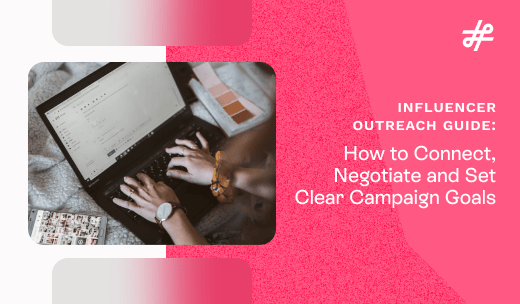
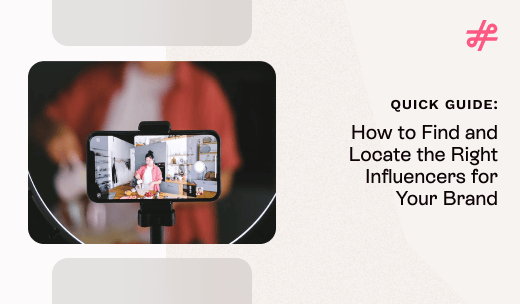



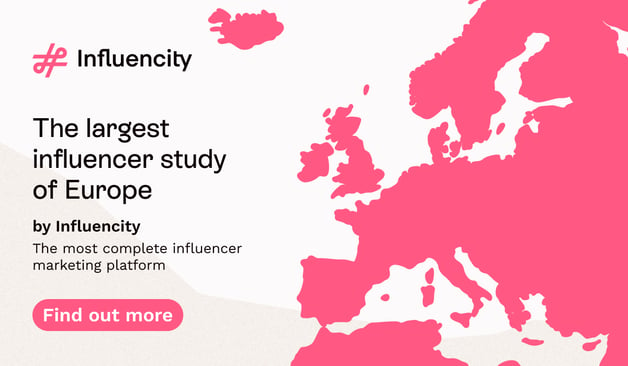

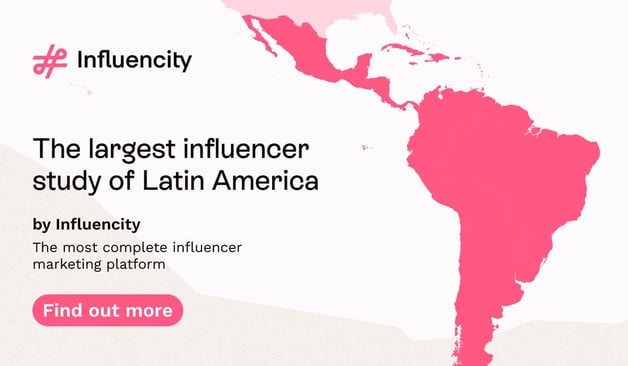


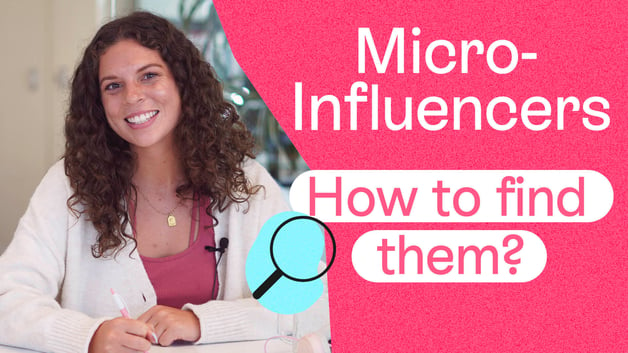


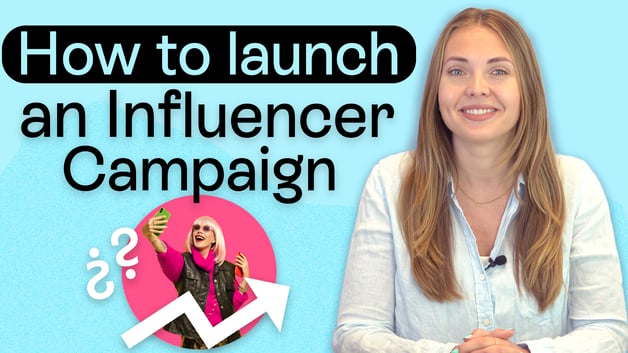



%20and%20How%20Can%20They%20Benefit%20Your%20Brand%20article.jpg?length=628&name=What%20Are%20Key%20Opinion%20Leaders%20(KOL)%20and%20How%20Can%20They%20Benefit%20Your%20Brand%20article.jpg)
